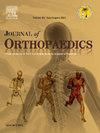Tranexamic acid use in rotator cuff repair: A systematic review of perioperative outcomes
IF 1.5
Q3 ORTHOPEDICS
引用次数: 0
Abstract
Background
Tranexamic acid (TXA) use has become the gold standard in total joint arthroplasty to limit intraoperative blood loss and transfusion rates. More recently, the indications for TXA have expanded to knee and shoulder arthroscopy with promising early results. However, the effectiveness of TXA during arthroscopic rotator cuff repair (RCR) is unclear. Therefore, the purpose of this study was to investigate perioperative outcomes following the use of TXA during RCR.
Methods
A systematic review was performed via the PRISMA (Preferred Reporting Items for Systematic Reviews and Meta-Analyses) guidelines using PubMed, MEDLINE, Embase, and Cochrane databases in November 2024. Studies were assessed for quality of visual clarity, operative time, mean arterial pressure (MAP), volume of arthroscopy irrigation used, arthroscopic pump pressure, and clinical outcomes.
Results
A total of 12 clinical trials involving 999 patients were included. 9 studies reported on visual clarity and 6 of these reported improvements in visual clarity with TXA administration. Four studies reported improvements in postoperative pain, however outcomes varied greatly depending on when follow-up assessment occurred. A majority of studies did not report differences in operative time, irrigation volume, or postoperative swelling. There were no venous thromboembolism events reported in the included studies.
Conclusion
TXA dosing during RCR surgery may improve visual clarity, however its effect on other perioperative outcomes remains unclear.
Level of evidence
Level I.
求助全文
约1分钟内获得全文
求助全文
来源期刊

Journal of orthopaedics
ORTHOPEDICS-
CiteScore
3.50
自引率
6.70%
发文量
202
审稿时长
56 days
期刊介绍:
Journal of Orthopaedics aims to be a leading journal in orthopaedics and contribute towards the improvement of quality of orthopedic health care. The journal publishes original research work and review articles related to different aspects of orthopaedics including Arthroplasty, Arthroscopy, Sports Medicine, Trauma, Spine and Spinal deformities, Pediatric orthopaedics, limb reconstruction procedures, hand surgery, and orthopaedic oncology. It also publishes articles on continuing education, health-related information, case reports and letters to the editor. It is requested to note that the journal has an international readership and all submissions should be aimed at specifying something about the setting in which the work was conducted. Authors must also provide any specific reasons for the research and also provide an elaborate description of the results.
 求助内容:
求助内容: 应助结果提醒方式:
应助结果提醒方式:


